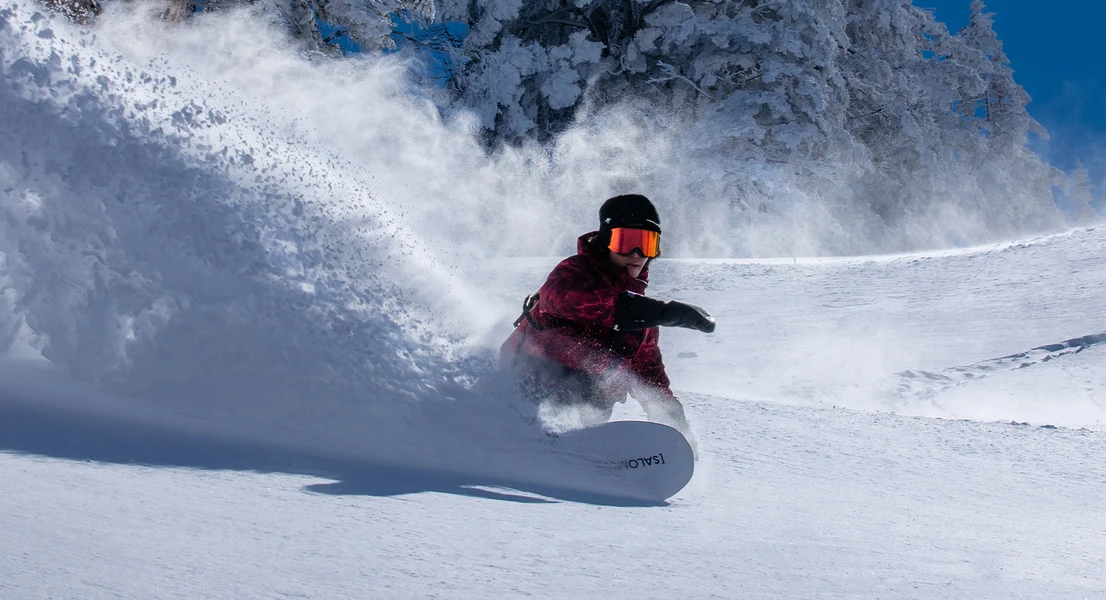
Snowboard width is an important factor to consider when choosing a snowboard. The width of a snowboard refers to the distance between the two edges of the snowboard at its widest point. The width of a snowboard can affect the performance and stability of the rider on the mountain. In this article, we will discuss the impact of snowboard width on performance and stability and how to choose the right width for you.
Why is Snowboard Width Important?
Snowboard width is important because it can affect the way that the rider interacts with the snow. A snowboard that is too narrow for the rider’s boot size can cause the rider to drag their toes or heels in the snow, which can affect their balance and control. A snowboard that is too wide can make it difficult for the rider to initiate turns and maneuvers.
Choosing the right snowboard width can improve the rider’s performance and stability on the mountain. A properly sized snowboard can provide optimal edge control, balance, and comfort.
What Factors Affect Snowboard Width?
There are several factors to consider when determining the right snowboard width, including:
Boot Size: The size of the rider’s boots is one of the most important factors to consider when choosing a snowboard width. The snowboard should be wide enough to accommodate the rider’s boots without causing toe or heel drag.
Riding Style: The rider’s riding style can also affect the snowboard width. Riders who plan to do mostly freeride and powder riding may benefit from a wider snowboard for greater stability and control. Riders who plan to do mostly park and freestyle riding may benefit from a narrower snowboard for greater maneuverability and flexibility.
Stance: The rider’s stance width can also affect the snowboard width. A wider stance may require a wider snowboard to provide optimal edge control, while a narrower stance may require a narrower snowboard for greater maneuverability.
Weight: The rider’s weight can also affect the snowboard width. Heavier riders may benefit from a wider snowboard for greater stability and control, while lighter riders may benefit from a narrower snowboard for greater maneuverability.
How to Determine the Right Snowboard Width
There are several methods for determining the right snowboard width for you, including:
Size Chart: Most snowboard manufacturers provide a size chart that correlates the rider’s boot size with the appropriate snowboard width.
Standover Test: Stand over the snowboard with your boots on and look down at the width of the snowboard. The snowboard should be wide enough to accommodate your boots without causing toe or heel drag.
Contact Points Test: Place your boots on the snowboard in your desired stance and look at the width of the snowboard where it makes contact with the snow. The snowboard should be wide enough to provide optimal edge control without causing toe or heel drag.
Binding Placement Test: Place your bindings on the snowboard in your desired stance and adjust them to the appropriate width. The snowboard should be wide enough to provide optimal edge control without causing toe or heel drag.
The Impact of Snowboard Width on Performance and Stability
Snowboard width can have a significant impact on the performance and stability of the rider on the mountain. A snowboard that is too narrow for the rider’s boots can cause toe or heel drag, which can affect the rider’s balance and control. A snowboard that is too wide can make it difficult for the rider to initiate turns and maneuvers.
A snowboard that is properly sized for the rider’s boots can provide optimal edge control, balance, and comfort. A wider snowboard can provide greater stability and control at high speeds and in variable terrain. A narrower snowboard can provide greater maneuverability and flexibility for park and freestyle riding.
Conclusion
Snowboard width is an important factor to consider when choosing a snowboard. The right snowboard width can improve the rider’s performance and stability on the mountain. When choosing a snowboard width, consider your boot size, riding style, stance, and weight. Use sizing charts and tests, such as the standover test and contact points test, to determine the right snowboard width for you. With the right snowboard width, you can enjoy a fun and exciting riding experience on the mountain.

